One Page Business Plan Samples
-
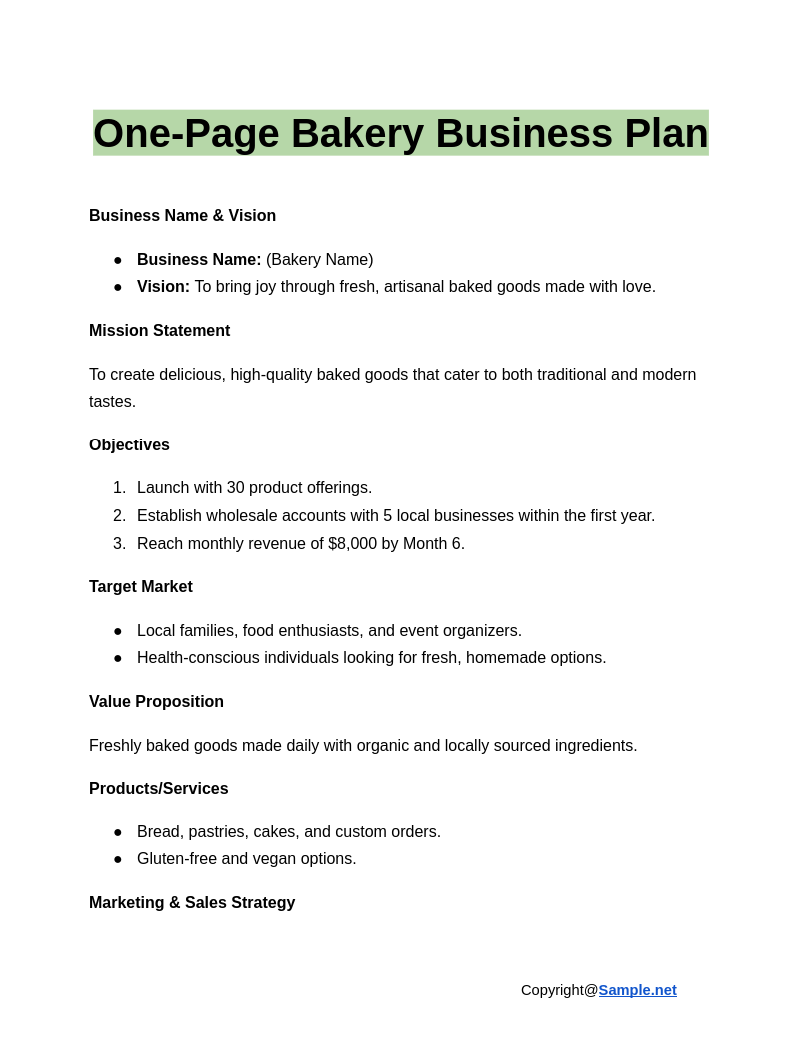
One-Page Bakery Business Plan
download now -
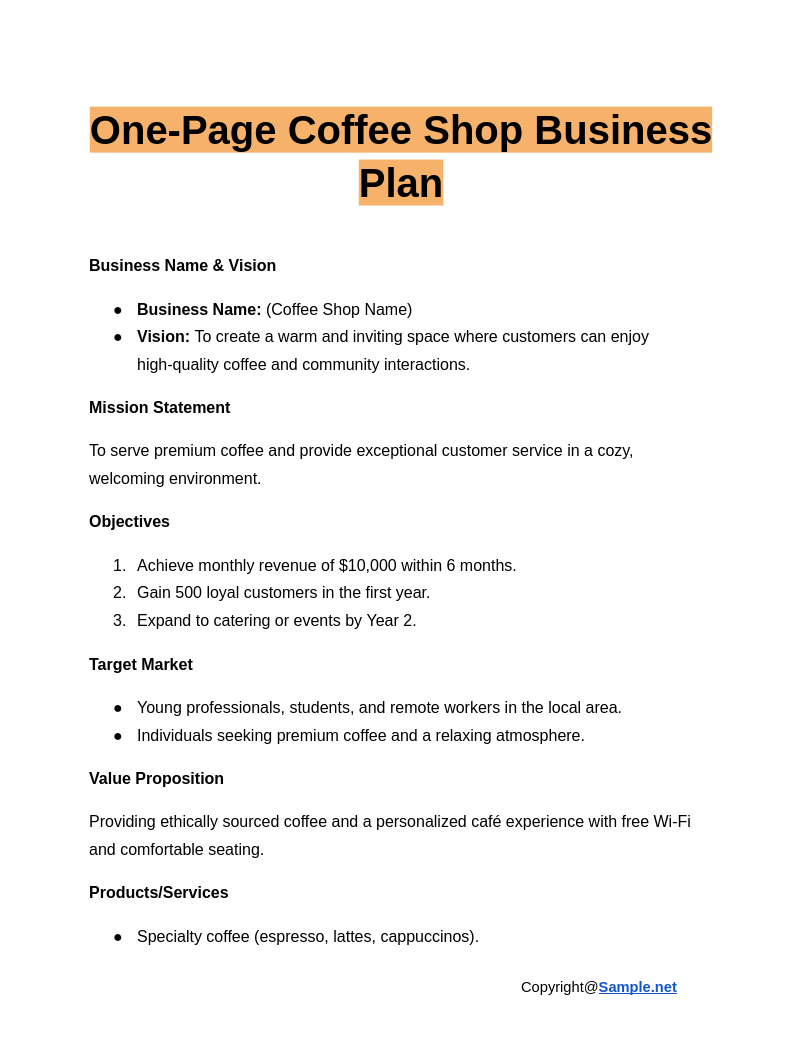
One-Page Coffee Shop Business Plan
download now -
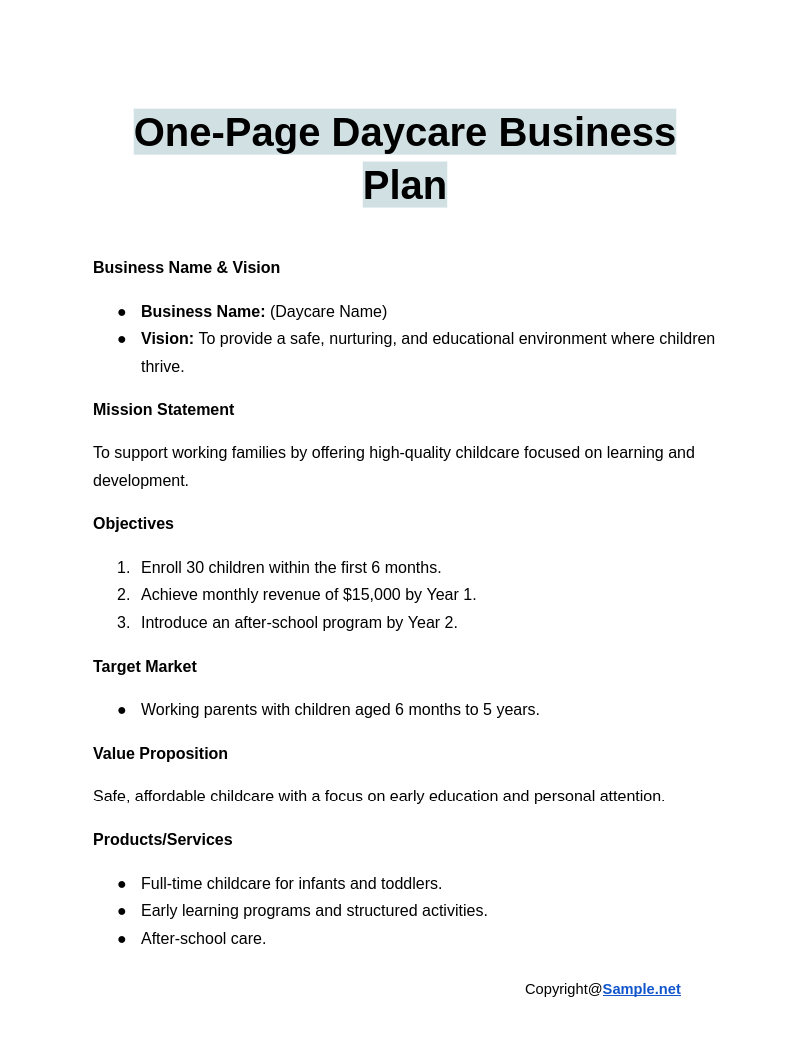
One-Page Daycare Business Plan
download now -
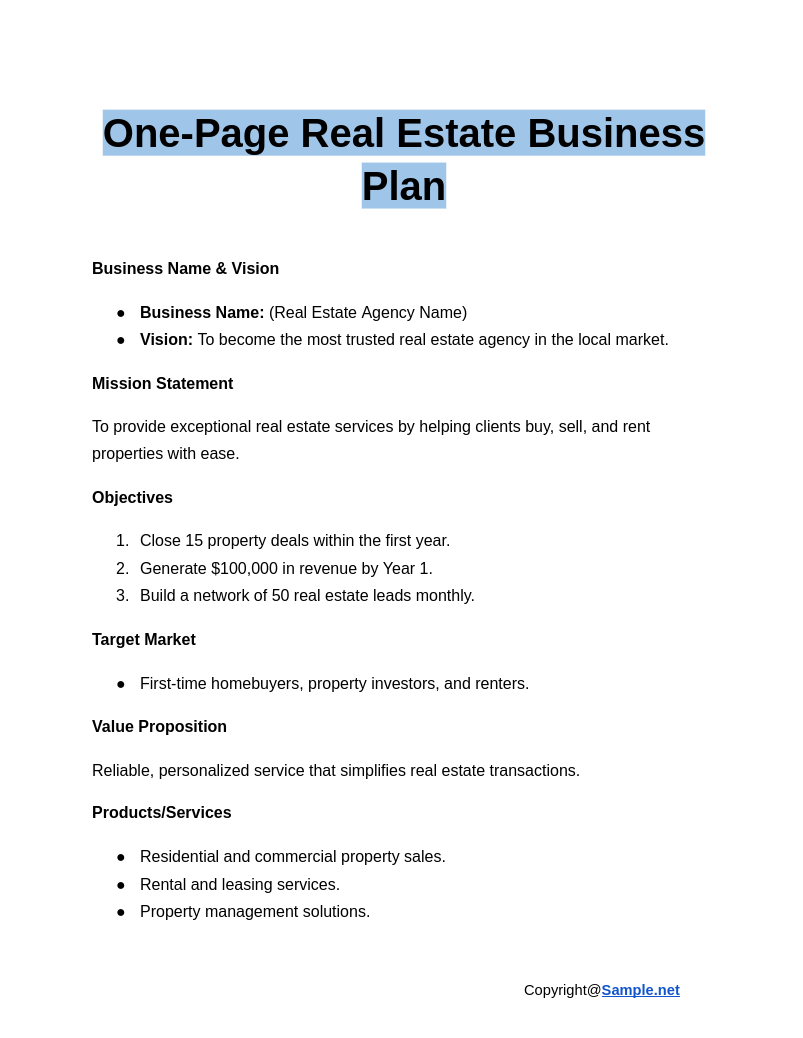
One-Page Real Estate Business Plan
download now -
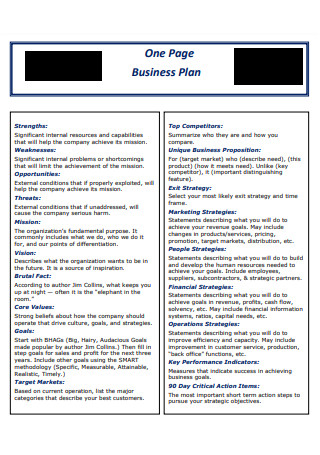
Sample One Page Business Plan
download now -
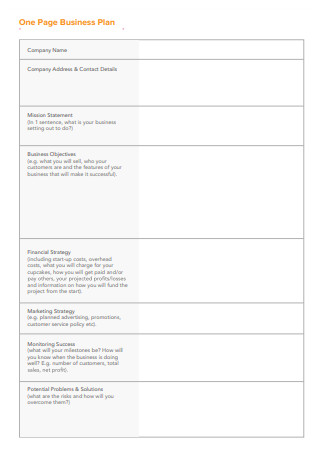
Formal One Page Business Plan
download now -

Quick One Page Business Plan Template
download now -
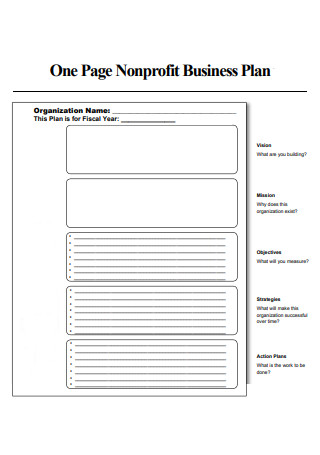
One Page Non Profit Business Plan
download now -
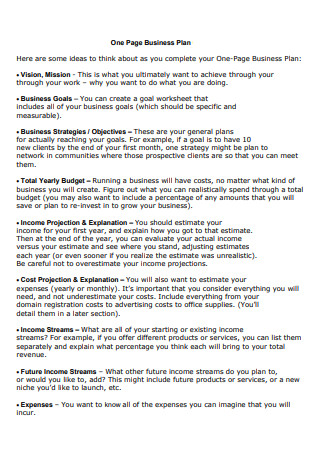
One Page Business Plan in PDF
download now -
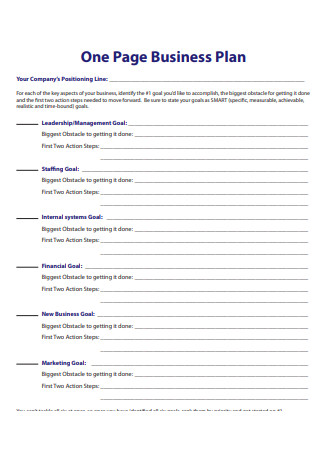
Simple One Page Business Plan
download now -
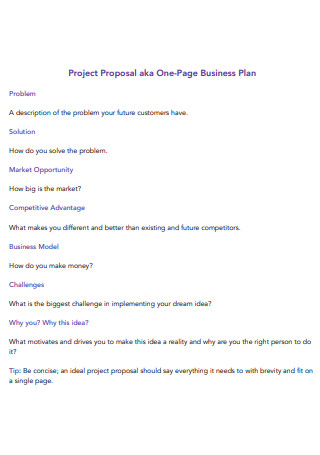
One Page Business Plan Project Proposal
download now -
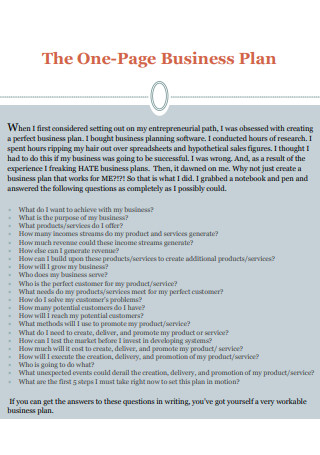
Printable One Page Business Plan
download now -
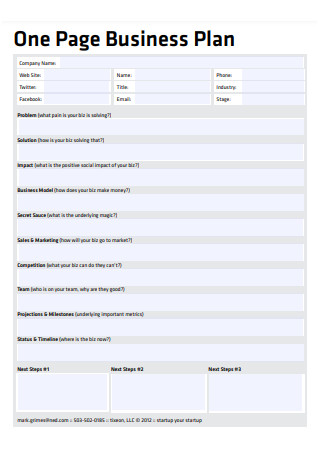
Basic One Page Business Plan
download now -
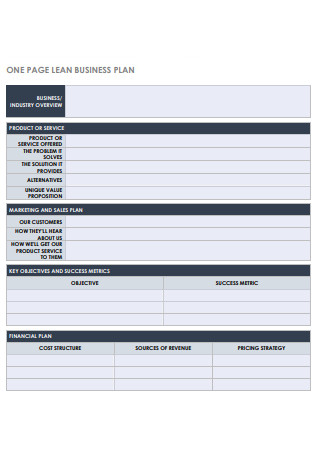
One Page Business Plan Format
download now -
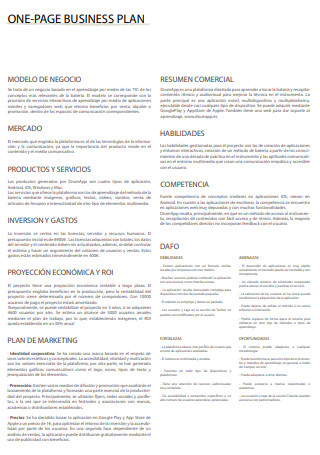
Standard One Page Business Plan
download now -
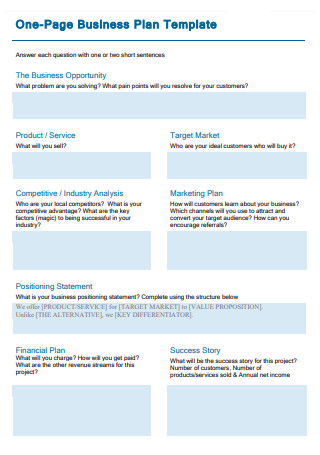
Draft One Page Business Plan
download now
FREE One Page Business Plan s to Download
One Page Business Plan Format
One Page Business Plan Samples
What is a One Page Business Plan?
Purpose of a One Page Business Plan
How to Create a One Page Business Plan
FAQS
What are the benefits of a One Page Business Plan over traditional plans?
Why is brevity important in a One Page Business Plan?
How can I use a One Page Business Plan for team alignment?
Can a One Page Business Plan address financial projections?
What should be included in a One Page Business Plan?
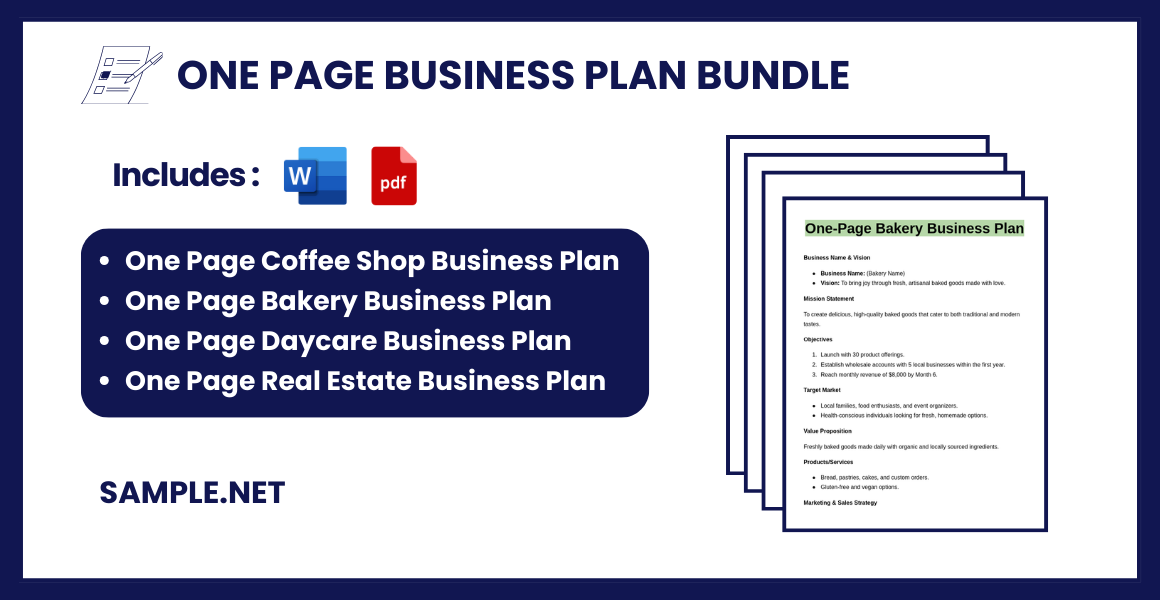
Download One Page Business Plan Bundle
One Page Business Plan Format
Business Name & Vision
- Business Name: (Your business name here)
- Vision Statement: (What do you aim to achieve? Your big-picture goal.)
Mission Statement
- Briefly describe why your business exists, the problem you solve, and your unique value.
Objectives
- List 3-5 measurable goals you aim to achieve in the next 1-3 years.
Example:- Increase revenue by 20% within a year.
- Acquire 500 new customers.
Target Market
- Who: Define your primary customer base (e.g., demographic, industry, location).
- Needs: What problems or desires are you addressing for this group?
Value Proposition
- What sets your business apart? Describe what makes your product or service unique and why customers should choose you.
Products/Services
- List your core offerings with a brief description of each.
Marketing & Sales Strategy
- Marketing: How will you attract customers (e.g., social media, referrals, ads)?
- Sales: How will you sell your products/services (e.g., online, in-store, subscriptions)?
Operations Plan
- Key activities or processes needed to deliver your product or service effectively.
- Note partnerships or suppliers if applicable.
Financial Summary
- Startup Costs: Outline initial expenses (if applicable).
- Revenue Streams: How will your business make money?
- Expense Overview: Fixed and variable costs.
- Profit Goals: Desired profit margins or revenue targets.
Team
- List key roles and responsibilities, whether for yourself or any team members.
Timeline & Milestones
- Outline major steps to launch or grow your business, with rough timeframes.
What is a One Page Business Plan?
A One Page Business Plan is a streamlined version of a traditional business plan, summarizing key details of your business on a single page. It provides a snapshot of your vision, mission, goals, strategies, and financial expectations. Ideal for startups, entrepreneurs, or small businesses, it focuses on clarity and brevity. This document is designed for quick communication, making it easier to share your business idea and attract interest without overwhelming details.
Purpose of a One Page Business Plan
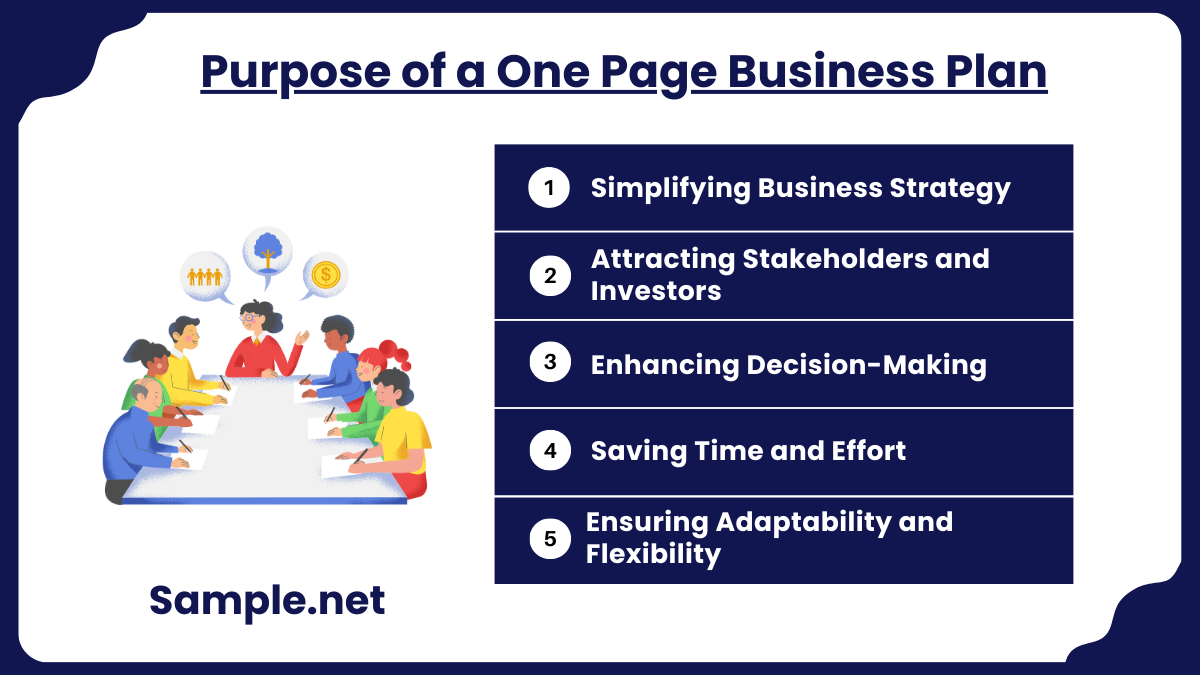
1. Simplifying Business Strategy
A One Page Business Plan distills complex strategies into a clear and concise format. This makes it easier for business owners to focus on what truly matters—setting priorities, taking action, and achieving goals without being bogged down by lengthy documents.
2. Attracting Stakeholders and Investors
Potential investors and stakeholders often appreciate brevity and clarity. This plan offers a snapshot of your business idea, capturing interest without requiring them to read through exhaustive details, increasing your chances of engagement. You can also see more on Business Sales Plan.
3. Enhancing Decision-Making
With a high-level view of your business, it becomes easier to evaluate progress and make decisions. A One Page Business Plan serves as a quick reference point, ensuring alignment with your goals and avoiding unnecessary distractions.
4. Saving Time and Effort
Crafting a one-page plan is faster than creating a traditional business plan. This allows entrepreneurs to focus more on implementing their ideas and less on exhaustive documentation, enabling them to launch their business sooner.
5. Ensuring Adaptability and Flexibility
The concise format makes it easier to update or revise the plan as your business evolves. This adaptability allows you to respond quickly to market changes or shifting goals while keeping your team aligned. You can also see more on 5 Year Business Plan.
How to Create a One Page Business Plan
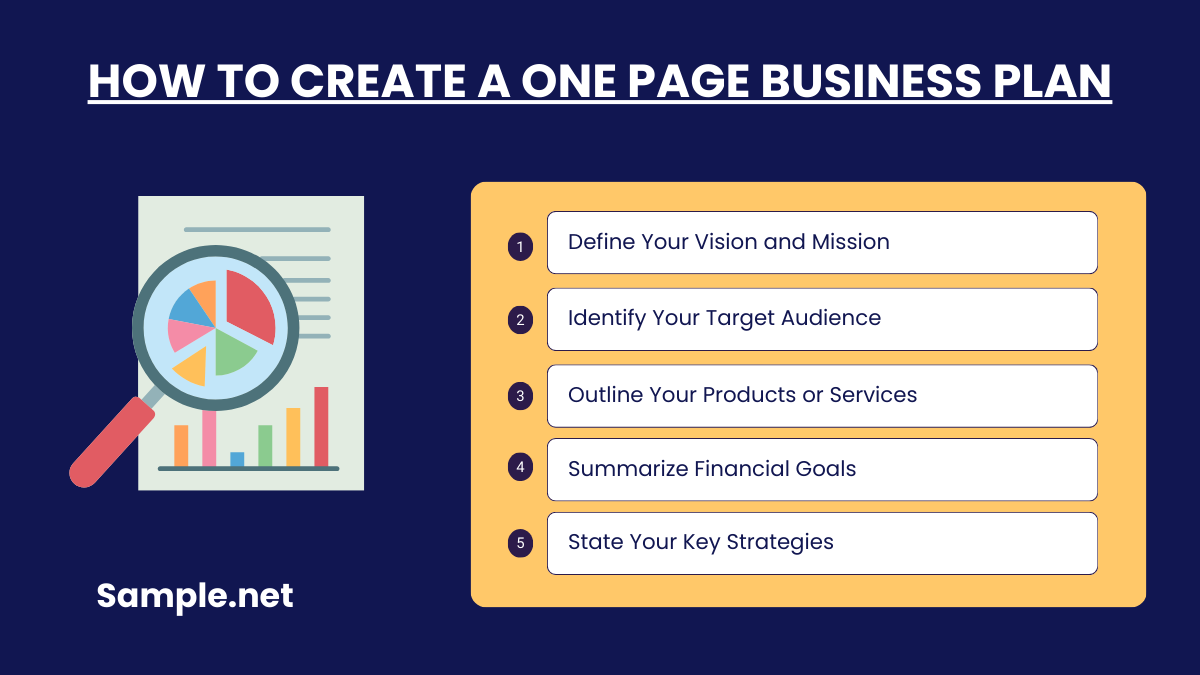
Step 1: Define Your Vision and Mission
Start by outlining your business vision and mission. Clearly state what your business stands for, the problem it solves, and its ultimate goals. Keep it concise but inspiring, as this sets the foundation for the rest of the plan. A strong vision and mission create clarity and direction, ensuring your plan resonates with potential stakeholders. You can also see more on Executive Business Plan.
Step 2: Identify Your Target Audience
Specify the customers or market segment your business aims to serve. Provide details about their demographics, preferences, and pain points. This helps demonstrate that you’ve researched your audience and understand their needs. A well-defined target audience ensures your strategies align with customer expectations.
Step 3: Outline Your Products or Services
Briefly describe what your business offers and how it addresses the needs of your target audience. Highlight your unique selling proposition (USP) to show what sets your products or services apart. Emphasize the value your offerings bring, as this strengthens your plan’s appeal to stakeholders.
Step 4: Summarize Financial Goals
Provide a snapshot of your financial objectives, including projected revenue, expenses, and profitability. Be realistic and use straightforward figures to convey your plan’s feasibility. Financial clarity builds trust and confidence among investors or partners reviewing your business. You can also see more on Investment Company Business Plan.
Step 5: State Your Key Strategies
Conclude by summarizing the strategies you’ll use to achieve your goals. This might include marketing approaches, operational processes, or growth tactics. Be specific but concise, focusing on the steps that will drive success. Clear strategies demonstrate your readiness to take action and deliver results.
FAQS
What are the benefits of a One Page Business Plan over traditional plans?
It saves time, simplifies communication, and provides quick insights into the business idea. Unlike lengthy documents, it’s more accessible to stakeholders and easier to use as a practical reference, enabling faster decision-making and execution.
Why is brevity important in a One Page Business Plan?
Brevity ensures that the reader can quickly grasp the essence of the business idea. It forces you to focus on what matters most, removing unnecessary details and making communication more impactful. This is particularly valuable in fast-paced business environments. You can also see more on Retail Business Plan.
How can I use a One Page Business Plan for team alignment?
Share it with your team to ensure everyone understands the business’s vision, goals, and strategies. Its concise format makes it easier for team members to stay focused on priorities, fostering collaboration and collective effort.
Can a One Page Business Plan address financial projections?
Yes, it includes a brief overview of financial goals, such as revenue targets, profit margins, and funding needs. While detailed financials are part of larger plans, this summary helps stakeholders understand the business’s financial viability.
What should be included in a One Page Business Plan?
A One Page Business Plan should include the vision, mission, target audience, products or services, strategies, financial projections, and goals. Each section should be concise yet impactful, presenting a complete picture without overwhelming the reader. You can also see more on College Business Plan.
